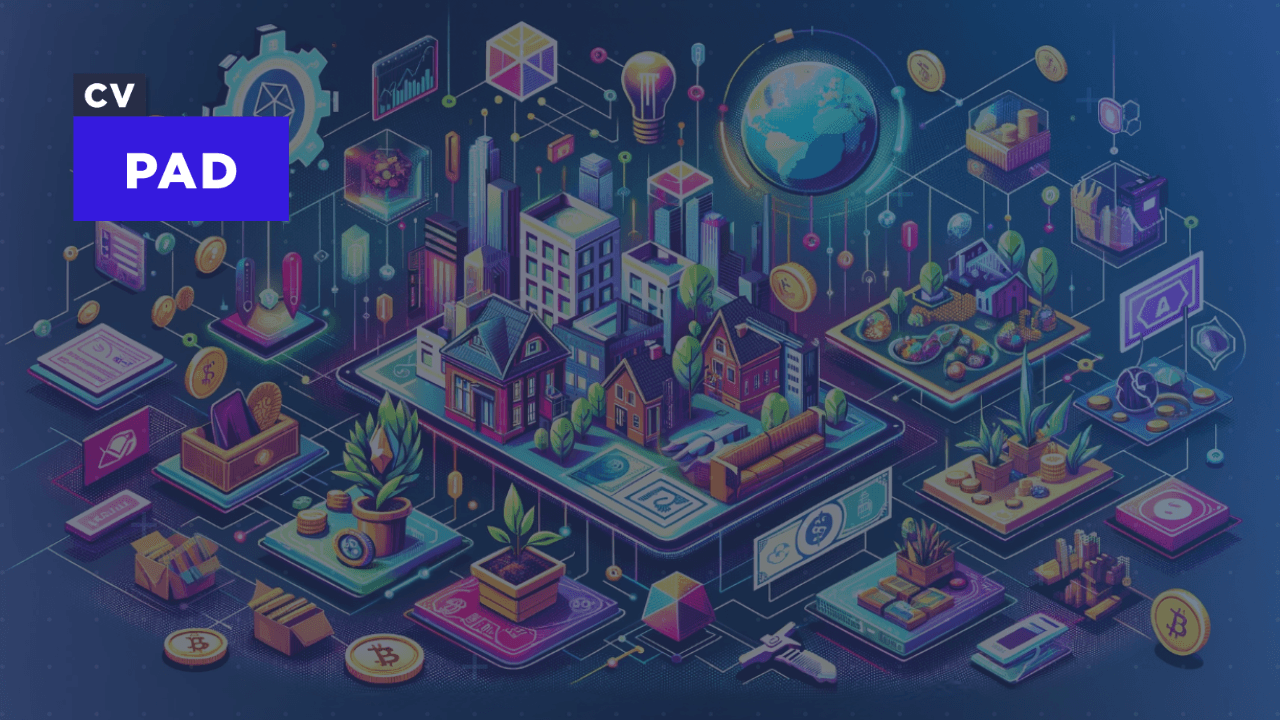Real-World Assets in Web3: Bridging Blockchain & Finance

Explore how tokenizing Real-World Assets (RWAs) revolutionizes Web3, unlocking liquidity and redefining ownership with CV Pad's support.
The tokenization of Real-World Assets (RWAs) represents one of the most transformative developments in the Web3 space. By integrating physical and traditional financial assets with blockchain technology, RWAs are unlocking liquidity, enhancing accessibility, and redefining ownership in the global economy. This exploration delves into the fundamentals of RWAs, their benefits, challenges, and CV Pad’s role in enabling projects that harness their potential.
What Are Real-World Assets in Web3?
Real-World Assets (RWAs) refer to physical or traditional financial assets that are tokenized and represented on a blockchain. These can include:
- Physical Assets:
- Real estate, precious metals, art, or commodities.
- Financial Instruments:
- Bonds, equities, and other securities.
- Intellectual Property:
- Royalties or licensing rights.
Through tokenization, these assets gain the ability to be traded, fractionalized, and managed on blockchain platforms.
Benefits of Tokenizing Real-World Assets
Enhanced Liquidity:
Tokenizing illiquid assets, such as real estate, allows them to be divided into smaller, tradable units. This democratizes access to high-value assets and enables broader participation.
Increased Accessibility:
Blockchain eliminates intermediaries, reducing costs and providing global access to investment opportunities that were previously restricted to institutional players.
Transparency and Security:
Blockchain’s immutable ledger ensures transparent ownership records and reduces the risks of fraud or disputes.
24/7 Markets:
Unlike traditional markets with operating hours, blockchain-based trading platforms operate continuously, providing flexibility and convenience.
Use Cases of RWAs in Web3
Real Estate:
Tokenized real estate allows investors to own fractional shares of properties, earning rental income or benefiting from capital appreciation.
Commodities:
Precious metals like gold can be tokenized, offering a secure and efficient way to trade and store value.
Art and Collectibles:
High-value art pieces can be fractionalized, enabling shared ownership among multiple investors.
Debt Markets:
Tokenized bonds or loans allow for automated interest payments and increased market efficiency.
Challenges in RWA Tokenization
Regulatory Compliance:
Navigating global regulations is complex, as tokenized assets often intersect with securities laws.
Asset Verification:
Ensuring the authenticity and proper valuation of underlying assets requires robust processes and trusted oracles.
Liquidity Constraints:
While tokenization aims to improve liquidity, achieving sufficient trading volume remains a challenge for niche asset classes.
Technical Barriers:
The integration of off-chain assets with blockchain systems involves significant technical and logistical hurdles.
CV Pad’s Role in the RWA Revolution
Facilitating RWA Token Launches:
CV Pad serves as a launchpad for projects focused on RWA tokenization. By providing a platform for innovative startups, CV Pad ensures these projects can:
- Design Effective Token Models: Aligning tokenomics with the unique characteristics of RWAs.
- Reach Retail and Institutional Investors: Offering tailored staking and investment opportunities for various user tiers.
Partnerships and Ecosystem Building:
Through collaborations with key players in the blockchain space, CV Pad supports:
- Integration of oracles for asset verification.
- Development of secondary markets to boost liquidity.
Empowering Retail Investors:
By staking CV Pad tokens, retail investors gain access to exclusive RWA projects, enabling them to diversify portfolios and participate in traditionally inaccessible asset classes.
The Future of RWAs in Web3
The RWA market is poised for exponential growth as blockchain adoption increases. Key trends include:
- Institutional Adoption:
- Major financial institutions are beginning to explore tokenized assets as part of their portfolios.
- Regulatory Evolution:
- Clearer regulatory frameworks will pave the way for broader adoption and innovation.
- Integration with DeFi:
- Tokenized RWAs will become essential components of decentralized finance, enabling novel financial products and services.
- AI-Driven Asset Management:
- AI tools will enhance valuation, risk assessment, and trading strategies for tokenized assets.
Conclusion
Real-World Assets are the bridge between traditional finance and the decentralized future of Web3. By tokenizing physical and financial assets, blockchain technology is unlocking unprecedented opportunities for investors, institutions, and entrepreneurs. CV Pad’s commitment to fostering innovation in this space positions it as a key player in the RWA revolution. For retail investors and projects alike, RWAs represent the next frontier of blockchain-powered growth and democratization.